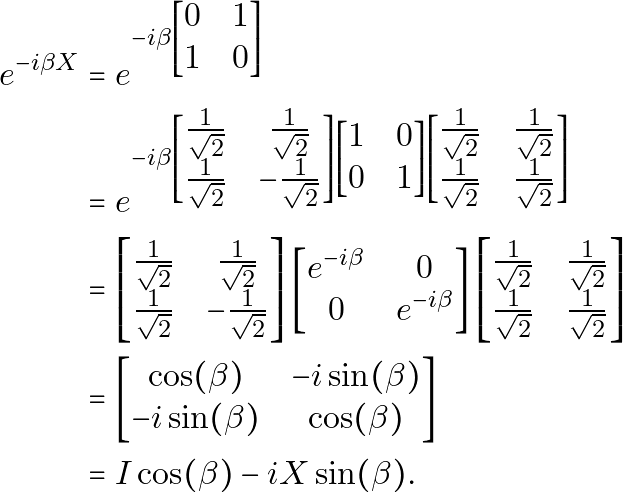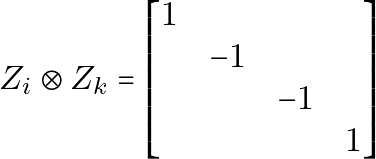This is not finished.
2020-07-30 first commit
Table of Contents
The problem definition
QAOA1
Traverse field Ising model
Adibatic quantum computation
Circuit design
Coding
Trival state preparation
After several days of thinking and researching, I decided to answer my own question.
N.B. The tensor product symbol ![]() are omitted when there is no risk in confusion, especially when the index is different. In symbol,
are omitted when there is no risk in confusion, especially when the index is different. In symbol,![]() .
.
Firstly, for case ![]() , we only consider qubit
, we only consider qubit ![]() , in which
, in which ![]() . As
. As ![]() and
and ![]() act on different qubits,
act on different qubits,
(1)
Now,
(2)
Thus,
(3)
Hence,
(4)
For the Ising traverse field Hamiltonian, we only consider ![]() .
.
For ![]() , it can be evaluated as
, it can be evaluated as
(5)
We can calculate two-qubit operations independently, such that
(6)
Numerically, if you cannot convince yourself,
(7)
and
(8)
and
(9)
Now, for a more specific example,
(10)
Q.E.D.
Reference
- 1.Choi J, Kim J. A Tutorial on Quantum Approximate Optimization Algorithm (QAOA): Fundamentals and Applications. In: 2019 International Conference on Information and Communication Technology Convergence (ICTC). IEEE; 2019. doi:10.1109/ictc46691.2019.8939749







